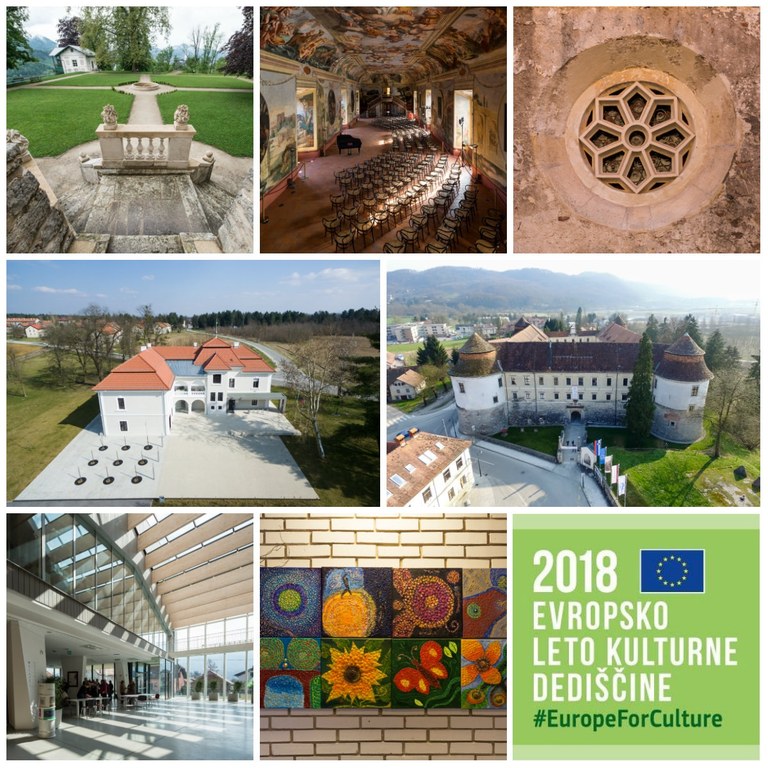European Year of Cultural Heritage kicks off in Slovenia

Slovenia counts over 350 castles, manor houses and mansions nowadays. Add to these ruins, such as for example the remains of the Ajdovski gradec archaeological park, and the number rises to an impressive 500+. The most visited Slovenian castle is the Ljubljana Castle, which received as many as 1.2 million visitors last year, followed by the Bled Castle and the Predjama Castle. The state owns and maintains 166 structures, 50 of them were transformed into museums, 15 into hotels and 23 in public institutions, such as psychiatric hospitals, prisons or retirement homes. Many of these monuments have been restored with support from the European Regional Development Fund (ERDF).
A budget of EUR 263 million was earmarked for integration of natural and cultural potentials in the previous financial period. The funds facilitated the development of sports and recreational infrastructure and tourist infrastructure, and fostered conservation of cultural heritage and public cultural infrastructure. A number of castles and mansions across Slovenia were brought back to their former glory through conservation and repair projects co-funded by the European Union, including the Mayer Villa in Šoštanj, Lanthieri Mansion in Vipava, Vipolže Villa in the Brda region, the Brežice Castle, the Strmol Castle and the Rajhenburg Castle. ERDF also supported the renovation of the National Gallery of Slovenia, Museum of Modern Art and the Plečnik House in Ljubljana, the redevelopment of the Park of Military History Pivka, and facilitated the development of a number of culture houses and youth centres (e.g. in Sežana, Bovec, Ravne na Koroškem, Šentjur, Krško, Rogaška, Slatina), libraries and other buildings.
Moreover, the European Social Fund (ESF) co-funded an array of projects seeking to enhance employability of vulnerable groups in the field of culture, and support their social integration. Many ESF-funded projects helped improve employment opportunities of the young in the field of fine arts and modern dance.
The abovementioned projects aimed to support the development of tourism in Slovenia, improve employment opportunities, and facilitate the revival, conservation and marketing of cultural heritage. The impacts of co-funded actions are felt and seen across the country, as the tourism offer has been considerably upgraded, diversified and improved, which, in turn, helps deliver new jobs, improves the competitiveness of Slovenian tourist destinations compared to EU destinations, and attracts record numbers of tourists and visitors. This puts Slovenia on the global tourism map and enhances its visibility.
The European Year of Cultural Heritage, a year of events and activities held across the country to celebrate cultural heritage, will take these efforts to the next level. The events will be listed on a special online events calendar created by the Ministry of Culture which has been appointed national coordinator of the European Year of Cultural Heritage.
The role of cultural heritage in terms of its contribution to the economic growth and social cohesion is often overlooked and too often underrated in Europe. Cultural heritage boasts an enormous potential for supporting cultural and creative industries, fostering creation and innovations, promoting sustainable tourism, strengthening social cohesion and creating long-term jobs. The year 2018 will be dedicated to raising awareness about our common history and values and underlining the role of cultural heritage in building stronger society and individuals and contributing to economic and sustainable development. The European Parliament declared the European Year of Cultural Heritage in order to encourage people to explore and share knowledge about Europe’s rich and diverse cultural heritage, celebrate, understand and protect the unique value of cultural heritage as a shared resource and a common good, raise awareness about shared history and values, and reinforce a sense of belonging to a common European space.
